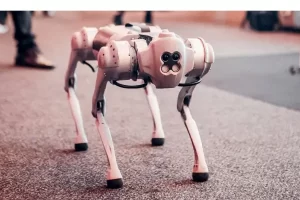As the global population ages, the challenge of ensuring that seniors can live independently has become increasingly important. According to the World Health Organization, the number of people aged 60 years and older is expected to reach 2 billion by 2050. This demographic shift brings both opportunities and challenges, especially concerning the quality of life for older adults.
In response to these challenges, technology is stepping in to bridge the gap between independence and support. Enter robots designed specifically to assist seniors. These innovations not only provide practical help with daily tasks but also foster emotional well-being through companionship. In this article, we will explore the various types of robots that can help seniors live independently, the key features to look for, real-world applications, and what the future holds for this exciting intersection of technology and elder care.
The Importance of Independence for Seniors
Maintaining independence is crucial for the emotional and psychological health of seniors. It allows them to preserve their dignity, self-esteem, and sense of control over their lives. Studies have shown that seniors who feel independent report higher levels of happiness and lower levels of depression.
Benefits of Independence
- Psychological Well-being: The ability to make choices fosters a sense of autonomy. This can be especially important for seniors who may feel a loss of control over their lives due to aging.
- Physical Health: Engaging in daily activities can encourage physical movement and help prevent health issues related to inactivity.
- Social Engagement: Independent living often leads to more social interactions, which can combat loneliness and isolation, two significant issues faced by many older adults.
Statistics on Senior Living Arrangements
The desire for independence is reflected in living arrangements. According to a 2020 survey by AARP, nearly 77% of adults aged 50 and older want to remain in their homes as they age. However, achieving this desire often requires additional support. This is where robots can make a significant impact, enabling seniors to age in place safely and comfortably.
Section 2: Types of Robots Designed for Seniors
With advancements in technology, several types of robots have emerged to support seniors in various aspects of daily living.
Companion Robots
Description and Examples
Companion robots are designed primarily for social interaction. They provide emotional support and companionship, helping to alleviate feelings of loneliness that many seniors experience. Some well-known examples include:
- Paro: This therapeutic robot mimics a baby seal and responds to touch and sound. Studies have shown that interacting with Paro can reduce stress and improve mood in seniors.
- ElliQ: An intelligent robot that encourages engagement through conversation, games, and reminders. It helps seniors stay connected with family and friends through video calls and messages.
Benefits of Companionship
Research indicates that social interactions can improve mental health outcomes for seniors. Companion robots can provide consistent interaction, which may be especially valuable for those who are housebound or live alone. By offering a non-judgmental presence, these robots can help seniors feel less isolated and more engaged with the world around them.
Assistance Robots
Overview and Functionality
Assistance robots are designed to help with daily tasks, making life easier for seniors who may struggle with physical limitations. Examples include:
- Robotic vacuum cleaners: Devices like the Roomba can help keep a home tidy without requiring physical effort from seniors.
- Medication management systems: Robots that remind seniors to take their medication on time, often dispensing the correct dosage at the right times.
Benefits of Assistance Robots
By automating routine tasks, these robots enable seniors to conserve their energy for more meaningful activities, promoting a sense of accomplishment and satisfaction. Furthermore, they can help prevent accidents associated with mobility challenges, such as slips or falls while cleaning.
Mobility Robots
Explanation and Benefits
Mobility robots are essential for seniors who have difficulty moving around. These include:
- Robotic walkers: Devices that provide support while walking, often equipped with sensors to detect obstacles and prevent falls.
- Smart wheelchairs: Advanced wheelchairs that can navigate autonomously, allowing users to move freely without assistance.
Enhancing Mobility and Safety
Mobility robots not only enhance independence but also ensure safety. By providing the necessary support, these devices can help seniors maintain an active lifestyle and participate in social activities, which are vital for their mental and physical health.
Features to Look for in Senior Support Robots
When considering robots designed for seniors, several key features can enhance usability and effectiveness.
Key Features
- User-Friendly Interface: Robots should have intuitive controls, such as voice activation or touch screens that are easy to navigate.
- Safety Features: Features like fall detection, emergency alerts, and obstacle avoidance can ensure the safety of seniors using these robots.
- Personalization: Robots that can adapt to individual preferences and needs can offer a more tailored experience, enhancing user satisfaction.
Importance of Safety Features
Safety is a top priority for seniors and their families. Robots equipped with advanced safety features can help reduce the risk of accidents, providing peace of mind for both users and caregivers. For instance, fall detection systems can alert family members or emergency services if an incident occurs, ensuring prompt assistance.
Real-World Applications and Success Stories
The implementation of robots in senior care has led to numerous success stories.
Case Studies
- An Example from a Senior Living Community: A community that integrated companion robots saw a significant reduction in reported feelings of loneliness among residents. Many seniors formed bonds with the robots, participating in activities and engaging in conversations.
- Individual Success Story: One senior, who was initially hesitant about using a robotic assistant, found newfound independence through a robotic vacuum cleaner. This allowed her to maintain a clean living environment without physical strain, greatly enhancing her quality of life.
Testimonials and Interviews
Interviews with seniors who have utilized these technologies reveal the positive impact robots have on their lives. Many express gratitude for the companionship and assistance provided, highlighting how these robots have helped them stay connected with family and friends.
Challenges and Considerations
While the benefits of robots for seniors are clear, there are challenges to consider.
Potential Barriers to Adoption
- Technology Literacy: Many seniors may feel intimidated by new technology, leading to resistance in adoption. Education and training can help overcome this barrier.
- Cost Considerations: High-quality robots can be expensive, and not all seniors have access to the necessary financial resources.
Addressing Privacy and Security Concerns
As with any technology, privacy and security are critical concerns. Seniors and their families must feel confident that their personal data is secure and that the robots do not compromise their safety.
Future of Robotics in Senior Care
The future of robotics in elder care is promising, with continuous advancements on the horizon.
Trends and Innovations
- AI Integration: The incorporation of artificial intelligence allows robots to learn from interactions, becoming more effective and responsive to individual needs.
- Advanced Sensors: Future robots may utilize enhanced sensors for better navigation and obstacle avoidance, improving safety and efficiency.
Predictions for Evolution in Senior Care
As technology continues to advance, we can expect to see a greater variety of robots tailored specifically for seniors. From health monitoring systems to more advanced mobility aids, the landscape of elder care will transform, empowering seniors to live independently for longer.
Conclusion
Robots designed to help seniors live independently represent a significant advancement in elder care. By providing companionship, assistance with daily tasks, and enhancing mobility, these technologies empower seniors to maintain their independence while ensuring their safety and well-being. As we look to the future, it is crucial for families and caregivers to explore these options and consider how robotic assistance could improve the quality of life for the seniors they care for.




